Introduction
Since I started researching the Waterlow Estate I’ve unearthed lots of historical details and photographs of neighbouring Weavers Fields Park and the streets that are now buried beneath the grass.
There are three parts to this post, the first deals with the history of the area up until 1938, the second the clearing, demolition and eventual development of the park and the third and final part details each street in turn.
- Part one – Growth (1700 – 1938)
- Part two – Demolition (1938 -1968)
- Part three – The lost streets of Weavers Fields
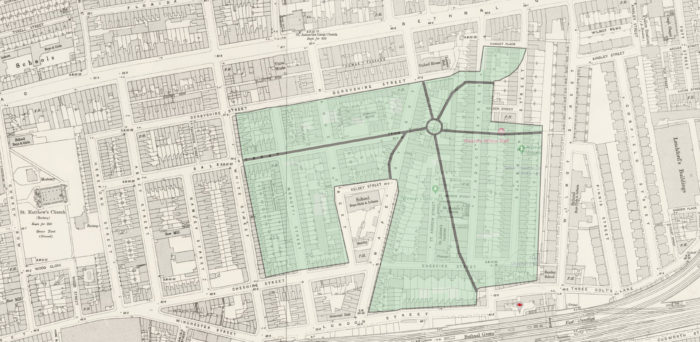
Much of the information I present here has been gathered over the past ten years from the web, oral histories from various people I’ve spoken to, along with visits to a number of archives. One of the most fascinating sources has been the Tower Hamlets Archive which holds many of the original County Council documents detailing the demolition of the houses and the conversion into a park.
Wherever possible I’ve linked to my sources and at the end of this post there are lots of links to other sites that feature further historical details of the area.
As ever I’m hugely dependent on people reaching out and sharing their own memories, family histories and experiences, so if there’s something you want to share please get in touch using the comments form below.
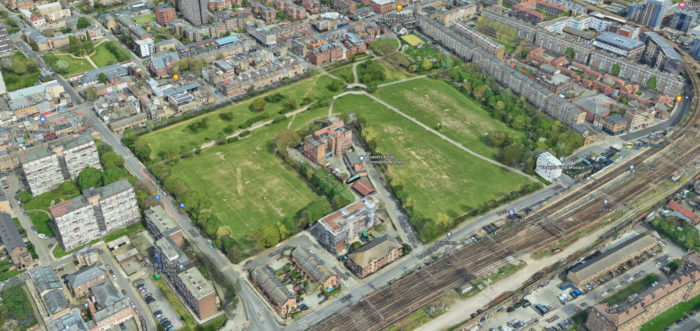
Today Weavers Fields is the largest park in Bethnal Green. It sits between Bethnal Green Road and Dunbridge Street to the North and South, with Vallance Road and Wilmot Street flanking East and West. Starting in the late 1950s those densely populated streets were cleared to make way for the park.
The story of those now vanished streets mirror that of Bethnal Green as a whole. The area grew increasingly populated from the 1500s up until the late 1900s when the local Authority started it’s slum clearance programme and demolition began. By 1967 most of the streets had gone and the park was opened.
A few reminders of those original streets still survive, namely the old Hague School on Kelsey Street (now a Nursery), along with a few of the original roads (although now much shortened). The layout of the paths in the park roughly follow some of the original paths of the now vanished streets.
The name Weaver Fields is a reference to the park’s history as home to Bethnal Green’s once thriving weaving industry. At one point the streets were lined with small houses, many with their distinctive large upper floor windows designed to allow in as much light into a Weaver’s workshop as possible.
You can read more about the East End weaving tradition here.
The History of Weavers Fields
Bethnal Green grew from plots of land and settlements centred around “The Green” (now Bethnal Green Park on the corner of Cambridge Heath Road and Roman Road).
You can read more about the growth of Bethnal Green here.
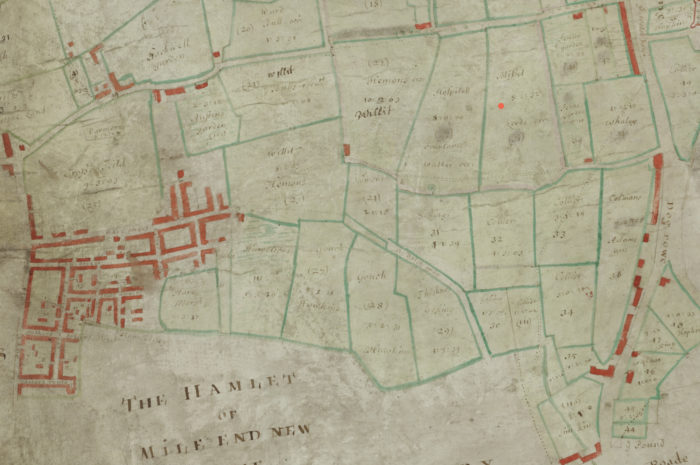
The streets that formed Weavers Fields were originally part of the Willett Estate. There is a detailed description of the development of the area in from the late 1700s until mid 1800s in “A History of the County of Middlesex” –
“In 1788 much of Willetts (George and Gravel fields) south of Bethnal Green Road was divided into lots, most of which were leased for 99 years to John May Evans, a Surrey builder, and William Timmins, a local brickmaker. They immediately built along the main road, including Shepherd’s Place or Row, and in the streets running south from it, named from the estate’s owners: White, Thomas, and Charles streets. Houses ‘in the background’ were probably in the narrow street parallel with Bethnal Green Road, called White’s or Thomas Passage or Granby’s Row. Abbey Street, at the west end of the development, existed as Benal Abbey Street in 1788. Part of the land was still a brickfield in 1803.”
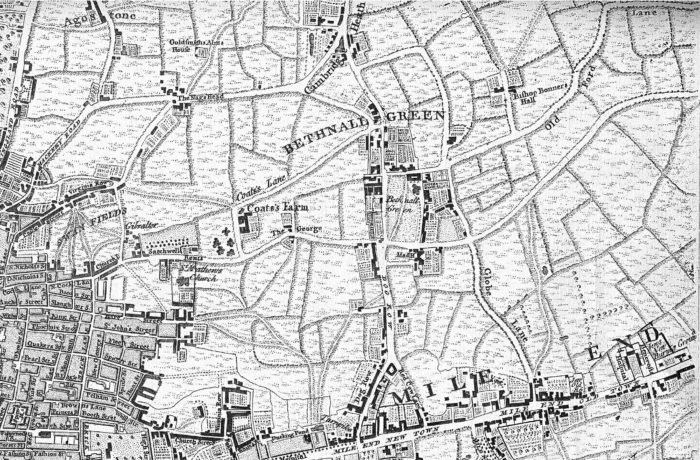
Throughout the early 1800s more and more streets were established, many of which still exist today.
“A History of the County of Middlesex” continues –
“Building meanwhile continued on Willetts, extending southward in streets named after the White family and places associated with it: Hereford, by 1823, and Derbyshire, Manchester (after 1864 Menotti), Cheshire, Sale (Ches.), Mapes (Willesden), Ramsey, and Hague, all by 1826. In 1836 there were 785 houses on the estate, all but 79 in the central area.”
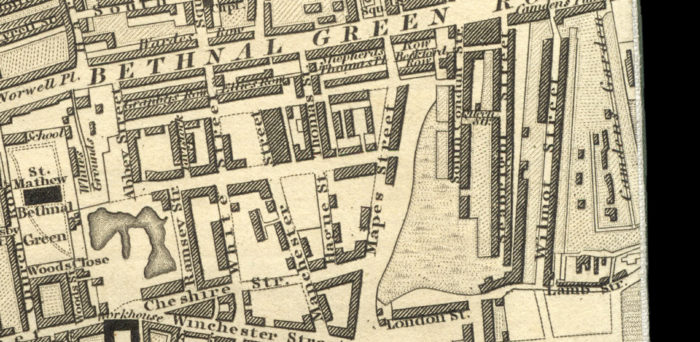
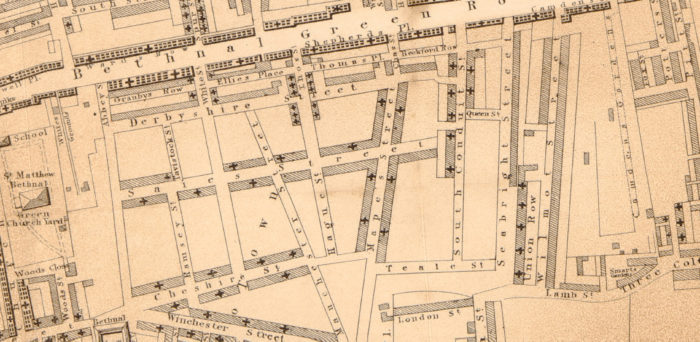
By 1838 all the fields and farming plots had gone and the area was fairly built up. Although it wouldn’t be until 1869 that the Waterlow Estate would be established on Wilmot Street, up until that point there would have been rows of low cottages just as found in the Weavers Fields area.
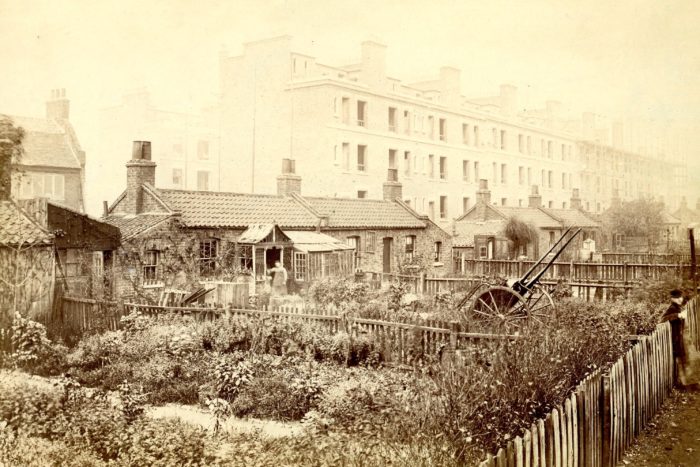
Possibly under construction judging by scaffold. Photograph taken from what is now Finnis Street.
(reproduced with the permission of The Tower Hamlets Local History Library and Archives).
Typical of the time the streets were cramped and narrow, with conditions sounding fairly dire according to “The Builder” (January 28th 1871):
“Off Bethnal Green Road proper we found many streets and lanes in a similarly neglected condition. In the back and low places are choked drains, inundation, and heaps of unremoved refuse. In White Street and its offsets, and Derbyshire Street, there was no end of sludge, and not a scavenger or sweeper to be seen anywhere. Round about this quarter a great many poor are located, eking out a subsistence in making articles of household use for children, costermongers, wood-splitters, chair-carvers, pill-box makers, and several other shop and house articles for sundry uses, the profits from which enable them to keep body and soul together”
By the early 1900s attention was starting to shift to the poor housing conditions of the Bethnal Green as a whole. In 1890 the nearby Old Nichol had been cleared to create The Boundary Estate (which still stands today). The Weavers Fields area continued to be occupied even though it was clear that much of the housing was of a poor standard.
In the next section we’ll look at the moves to clear the area and regenerate.
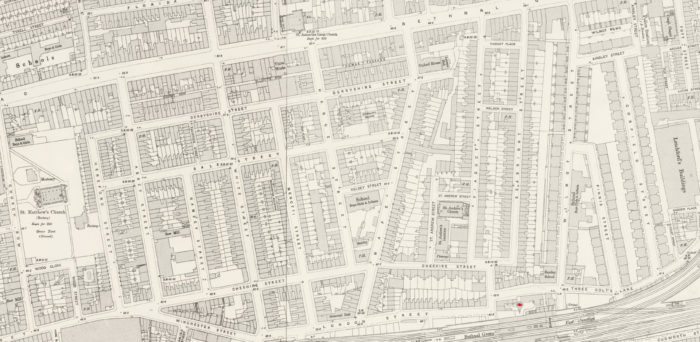
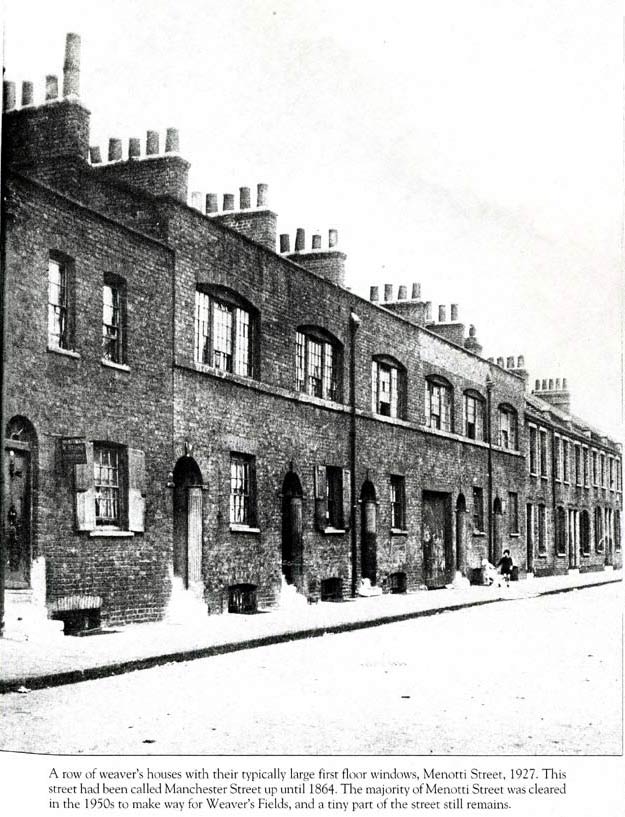
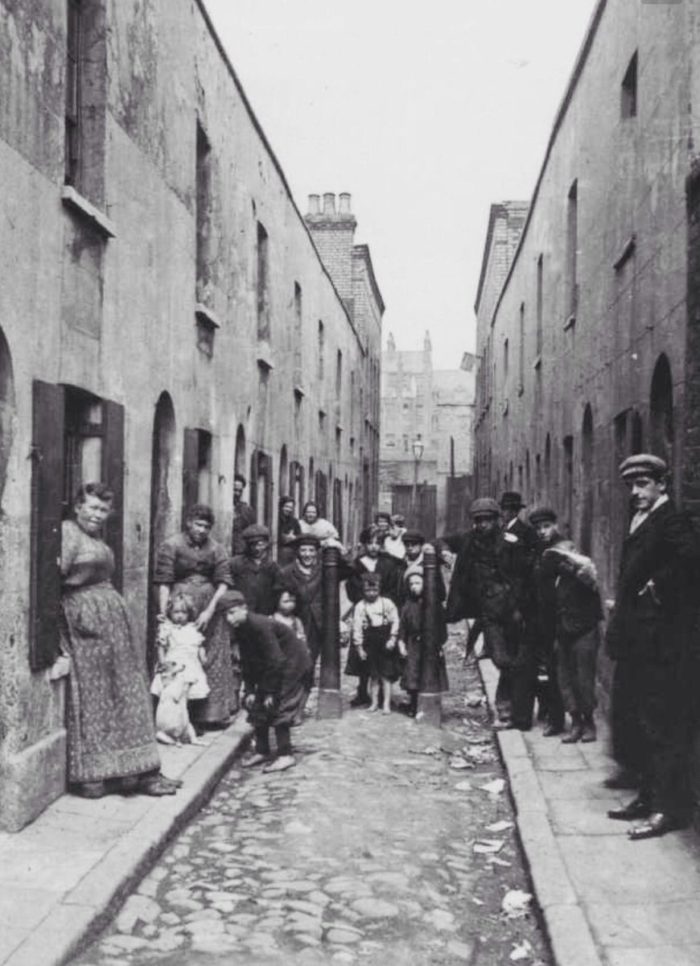
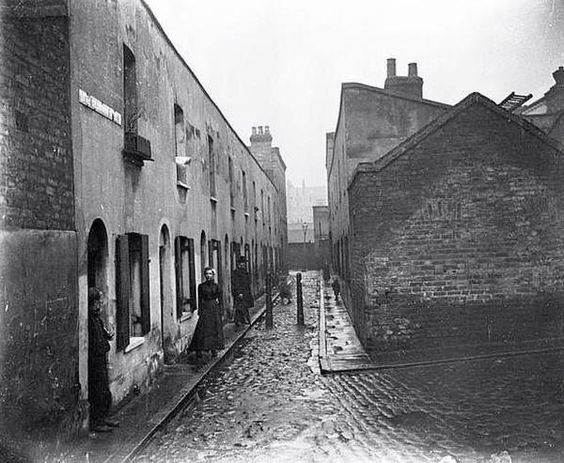
Interesting links
- Georeferencer – Amazing website that allows you to overlay hundreds of historical maps – https://www.georeferencer.com/compare#287056740997
- Historian Peter Guillery reveals a lesser-known part of Huguenot and Spitalfields heritage – https://www.family-tree.co.uk/how-to-guides/forgotten-weavers-housing-of-the-spitalfields-silk-district-in-london/
- Matilde Gallardo’s brilliant article bringing to life the personal history of Alice Pike, who’s family were weavers living on Mape Street – https://eastendwomensmuseum.org/blog/2020/8/26/a-weavers-daughter-alice-pike
- Essex Cockney’s Photographs from a fun day in 1970 – https://www.essexcockney.com/weavers-fields
- Making History in Bethnal Green: Different Stories of Nineteenth-Century Silk Weavers (Hilda Kean and Bruce Wheeler) – https://citeseerx.ist.psu.edu/viewdoc/download?doi=10.1.1.1012.8287&rep=rep1&type=pdf
- The Workhome, website dedicated to the idea of working from home. Lots of great historical context here – http://www.theworkhome.com/history-workhome/
- Details on the development of Bethnal Green – https://www.british-history.ac.uk/vch/middx/vol11/pp95-101
- Layers of London, a brilliant site which allows you to overlay various maps and datasets – https://www.layersoflondon.org/
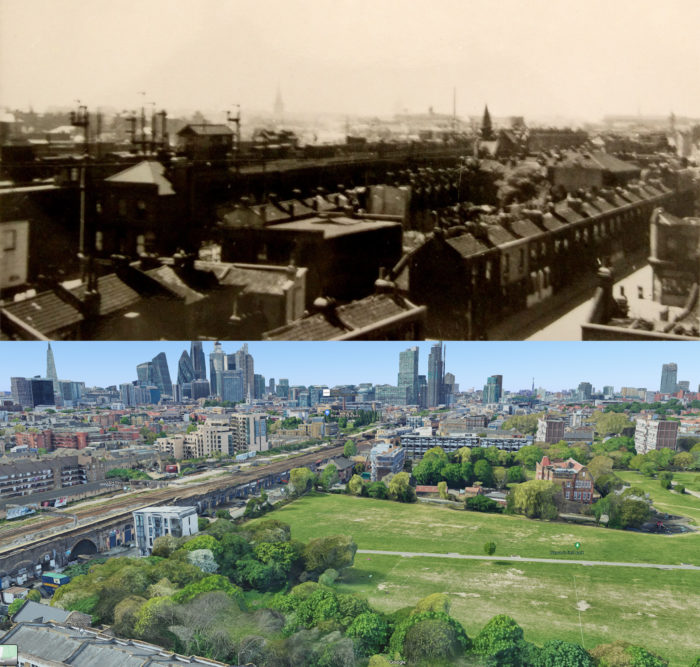
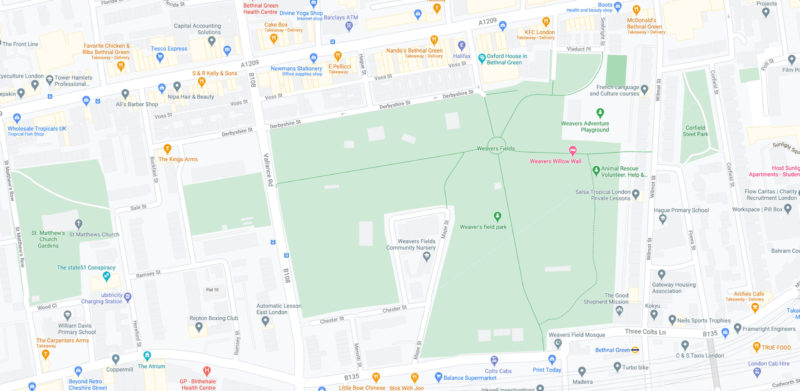
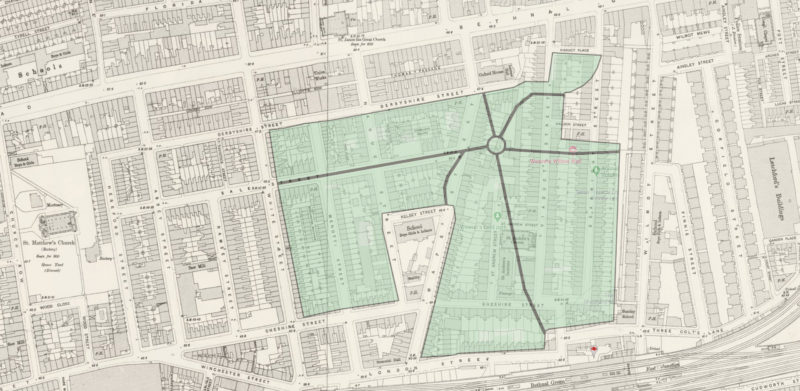
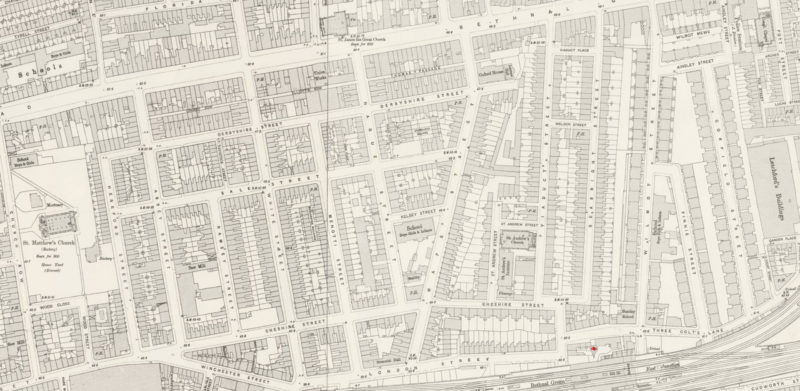
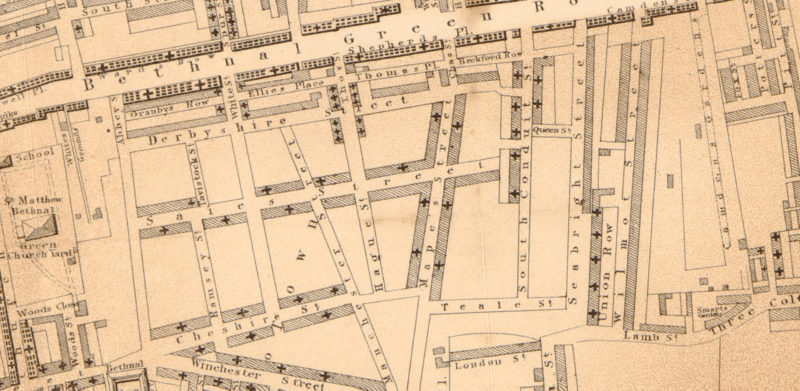
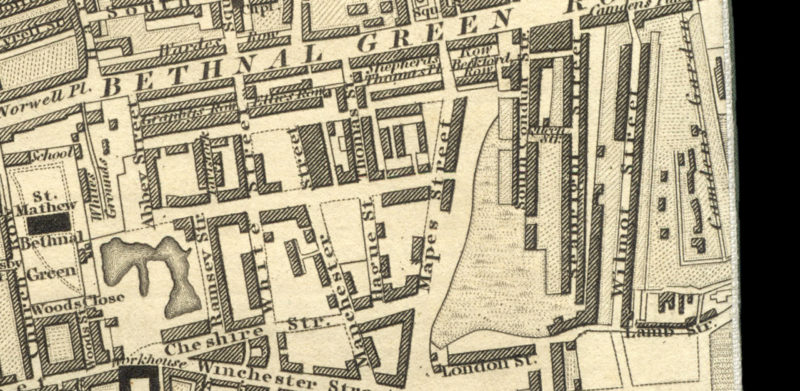
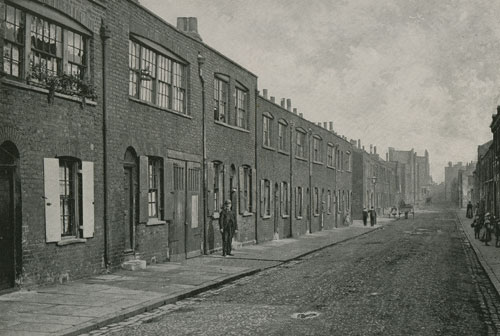
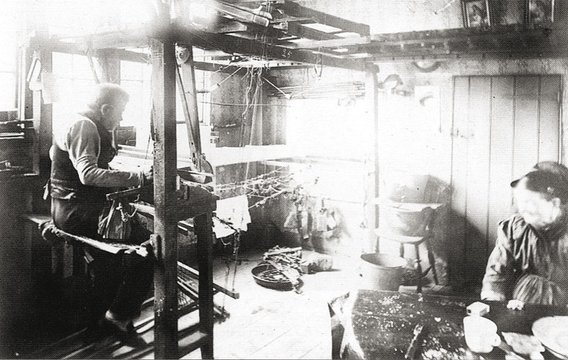

Love the history. I was born in 266 Corfield Street in 1937. I worked for Bethnal Green Council and then Tower Hamlets Council from 1952 till 1988. My family history based in BG goes back over 200 years.
My dad Ron was a caretaker for Waterloo estate
Hi John, my grandmother Ruby Nell Tatnell and her husband George William Perry used to live at 367 Corfield Street in 1912. He was a fishmonger’s assistant and later went on to have his own business and lived at 72 Old Bethnal Green Road .
Hi. I noticed you mentioned your grandfather was a fishmongers assistant. My family owned the Stichbury Fried Fish shop until, we think, 1920 when it became Feigenbaums. My grandfather worked there and then for Goldmans on Vallance road.
Wondering if you know when Stichbury’s changed hands? Did your grandfather work there or at Goldmans? Do you have any old photos of 1,3,8 Three Colts Lane? Fish shop was at 1, but they also had a pie and mash shop next door.
Thanks so very much for any help you can offer.
My great, great grandfather, William White, was a silk weaver, then a foreman/silk merchant 1897 & prior to that. He married Jane Mary Green in 1897. It’s a long shot, but I noticed your last name is White
Correction: William White’s son, Charles White, married Jane Mary Green.
My family lived in Granby’s Row when I was born in 1951 in BG Hospital, Cambridge Heath Road.
My great great grandfather, a silk weaver, lived at 7 London Street. I am always grateful to find stories and pictures of my family’s past. Perhaps, one day, I shall see a picture of their house!
Hello, I am very interested to read this as I have written a historical novel and in it I have one of my main characters living on London Street which I have described as one of the silk weaver’s houses with the big room with big window upstairs. Do you happen to know if the houses on that street were of that kind? BTW I grew up just around the corner from there on Corfield and then as a teenager on Wilmot Street. My paternal grandmother and her mother too, my great-grandmother also were from Bethnal Green and were living on those streets going way back to at least the 1850s. It was a wonderful and very colourful area despite being for many a very poor way of life. Pauline Hall.
My Great Great Grandfather Benjamin Cottrell was a Braid Manufacturer at 6 Abbey Street. He died in 1847 and left substantial property, including a house in Upton Place where he was living. He had a steam engine in his workshops too.
I work as fireman (and still am). I used to be stationed at Whitechapel Fire Station (on 27 Commercial Road, E1),, regarding the former Lord Hood Public House Pub on the corner of Weavers Field. We attended and tackled the blaze when it was on fire back in early 2008. It was in a derelict state. The building had squatters inside it who thankfully all escaped all in time. We managed to save the building. However, the inside was completely gutted and the staircase failed. It was x4 pump fire which meant it was big and needed a lot of manpower. 2 trucks from Whitechapel attended, one from Kingsland Road and the other from Shadwell (Cable Street) arrived. The fire engine from Bethnal Green (on the Roman Road) did not attend as they were on another incident elsewhere at the time. Less than a year later, we were called to the same place once to tackle the plane – this time at the end of 2008. Once again we saved the building facade, however the internals were completely gutted. We understood it sold for £500k in 2009 to developers. Sad to see it was demolished. It now looks like an eyesore with the new building. Such a lovely pub this used to be as everything around it went. Coincidentally, I used to live in Brady Street and Collingwood Street in the early 80’s up until the early 2000’s. So am familiar. As a kid, I used to love going down the Sunday market back then. Charlie Burns on Bacon Street (for you all that know) was one of the nicest guys I’ve ever met in my life. Sadly passed away along with his nephew who used to run Repton boxing. Love the messages on here. Please keep them coming. Like to hear your stories.
The Kelsey family were Silk manufacturers in Bethnal Green.
My 3rd Great Grandfather had a business in Abbey Street and several businesses along the Bethnal Green Road with his 5 brothers.
William’s father Benjamin Kelsey started it all in Nicholls Row.
They had warehouses at the canal ,which spanned over several streets.
George Kelsey helped form the ragged school and became a local missionary in the area.
Great -thank you for all your hard work! I trace Georgian foundlings and thought it might be useful to let you know that there was a “Joseph Palmer of Wilmot St, St Matthews. Bethnall Green” “Weaver” (spelling as per 1700s!) who took a foundling called Jane Dean (born 5th Dec 1758), as an apprentice to undertake “household business” i.e. servant. She appears to have partially literate. I don’t know if there are relatives out there that might find this of interest.
Sorry – forgot to add the apprenticeship for Jane Dean was 16th Aug 1769 🙂
My great grandparents and grandparents were from Bethnal Green. On the birth certificate of my great grandma in 1883 the address was 99 Derbyshire Street. When my Great Grandad was born in 1882 the address on his birth certificate was 15 Ramsey Street. My grandparents got married in St.Matthews Church in 1936. I don’t know what my great great grandparents did or if they were originally from France and were part of the weavers community. I haven’t been able to search further back yet.